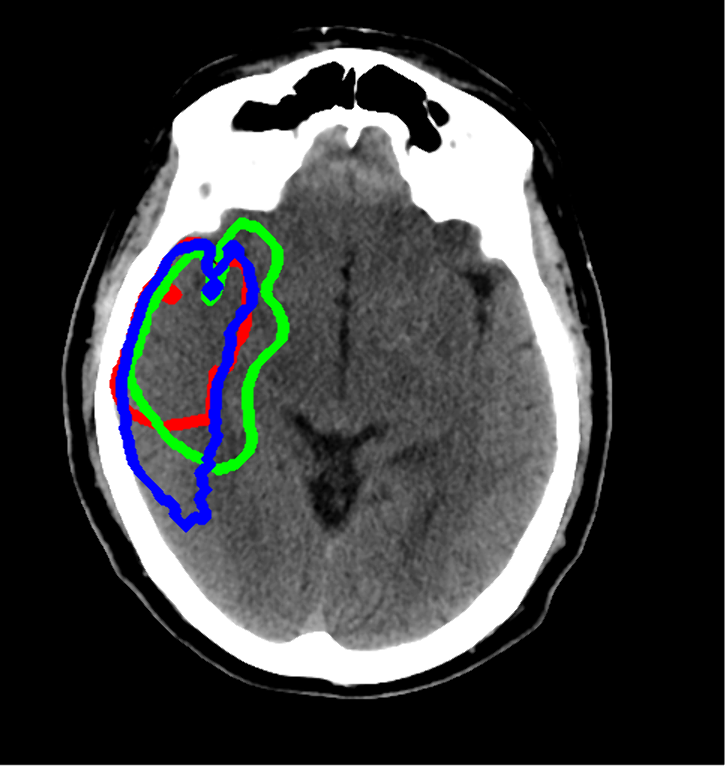EVALUATING NNU-NET FOR EARLY ISCHEMIC CHANGE SEGMENTATION ON NON-CONTRAST COMPUTED TOMOGRAPHY IN ACUTE ISCHEMIC STROKE PATIENTS (ID 1038)
Abstract
Group Name
On behalf of Circle Neurovascular Imaging, Inc. and the University of Calgary Stroke Program
Background And Aims
Detecting and delineating early ischemic changes (EIC) on non-contrast CT (NCCT) is a challenging but important step in diagnosing and treating patients with acute ischemic stroke (AIS). Our aim was to develop an automated tool that can identify EICs on NCCT accurately.
Methods
We implemented a 3D Convolutional Neural Network (CNN) based on Isensee’s nnU-Net to segment EIC in NCCT. Our dataset included 538 images labelled for EIC by expert neuro-radiologists, of which 438 were used for model development and 100 were used for testing. The interrater lesion segmentation agreement between the two experts on the test dataset was used as the benchmark against which the model’s performance was tested (Figure 1). Volumetric measurements were compared using Pearson’s r. Spatial measurements were evaluated using Dice Similarity Coefficient (DSC) on lesion-positive only cases as DSC is not well defined on lesion-negative cases.

Figure 1: An example showing the three segmentations, namely, Reader-1, Reader-2, and nnU-Net segmentations shown in red, green, and blue, respectively.
Results
Pearson’s r [95% CI] between the two expert readers, the model and Reader-1, and the model and Reader-2 were 0.95 [95% CI 0.88-1.00], 0.86 95% CI [0.78-0.94] and 0.85 [95% CI 0.77-0.92], respectively. Median DSC [interquartile range (IQR); number of positive cases included (N)] between the two expert readers was 54.8% [40.7%-69.2%; 85], 41.7% [22.0%-59.9%; 85] between model and Reader-1, and 42.3% [14.3%-59.3%; 85] between model and Reader-2.
Conclusions
nnU-Net can segment EIC on NCCT with reasonable accuracy when compared to the human gold standard i.e., an expert neuro-radiologist.











